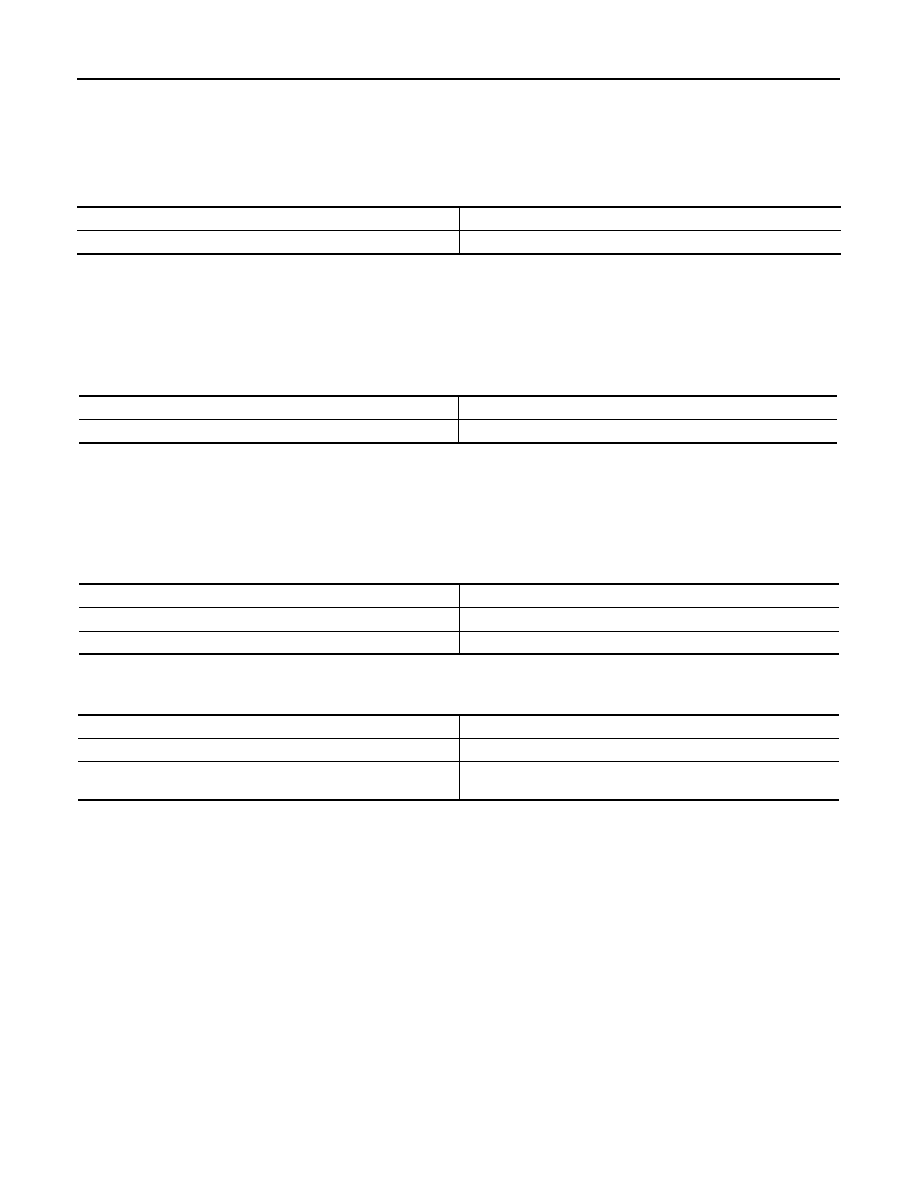содержание .. 595 596 597 598 ..
Nissan Tiida C11. Manual - part 597

EC-1038
< SERVICE DATA AND SPECIFICATIONS (SDS)
[MR18DE]
SERVICE DATA AND SPECIFICATIONS (SDS)
SERVICE DATA AND SPECIFICATIONS (SDS)
SERVICE DATA AND SPECIFICATIONS (SDS)
Idle Speed
INFOID:0000000001162007
*: Under the following conditions
• A/C switch: OFF
• Electric load: OFF (Lights, heater fan & rear window defogger)
• Steering wheel: Kept in straight-ahead position
Ignition Timing
INFOID:0000000001162008
*: Under the following conditions
• A/C switch: OFF
• Electric load: OFF (Lights, heater fan & rear window defogger)
• Steering wheel: Kept in straight-ahead position
Calculated Load Value
INFOID:0000000001162009
Mass Air Flow Sensor
INFOID:0000000001162010
*: Engine is warmed up to normal operating temperature and running under no load.
Condition
Specification
No load* (in Neutral position)
700
±
50 rpm
Condition
Specification
No load* (in Neutral position)
15
±
5
°
BTDC
Condition
Specification (Using CONSULT-III or GST)
At idle
10 – 35 %
At 2,500 rpm
10 – 35 %
Supply voltage
Battery voltage (11 – 14 V)
Output voltage at idle
0.8 – 1.1V*
Mass air flow (Using CONSULT-III or GST)
1.0 – 4.0 g·m/sec at idle*
2.0 – 10.0 g·m/sec at 2,500 rpm*